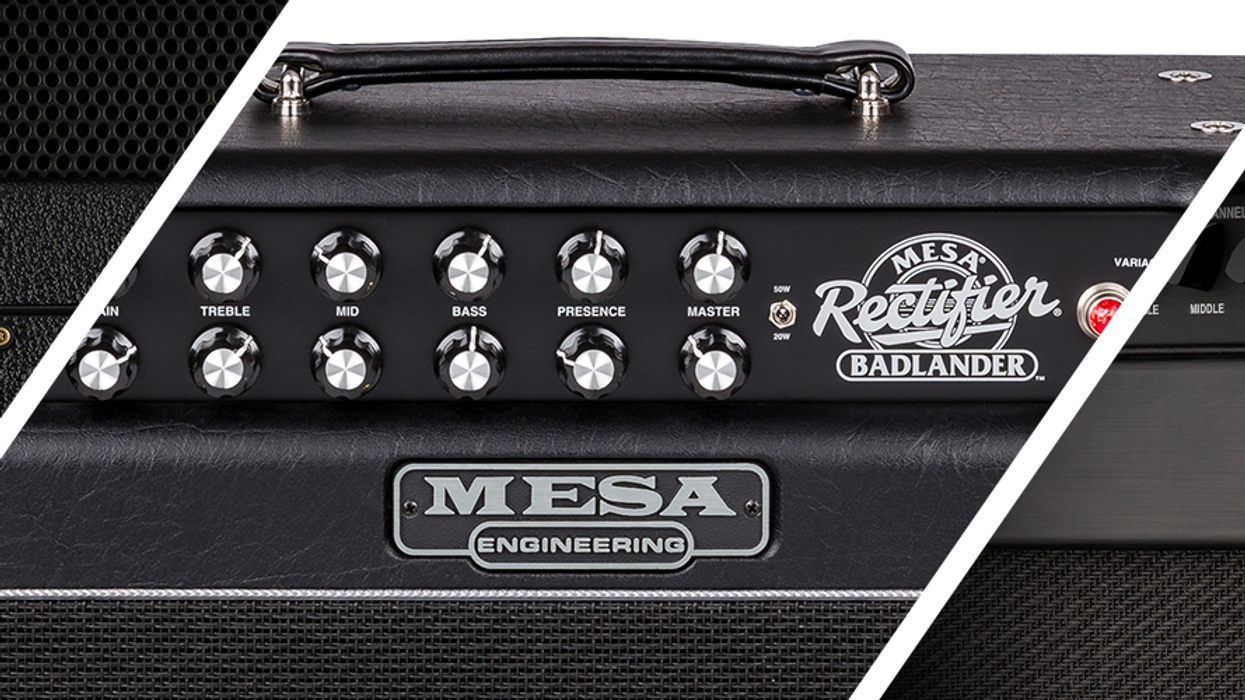I’ve acquired many fuzzes since I bought my Sovtek Big Muff more than two decades ago. And it’s still, hands-down, my favorite. For my purposes it does everything: droning controllable feedback, punky crunch, Valkyrie-wail lead sounds, and psychedelically thuggish buzz that would make a Vox Tone Bender blush. Specialized fuzz units in my collection might do certain things better, or be more appropriate in a specific situation, but I’d feel okay if my old Sovtek was the only pedal I had for a session or show.
Electro-Harmonix’s new-version Green Russian Big Muff slides into each of those roles with ease. Its voices often make it a dead ringer for an original—and those sounds that aren’t exactly original are more than serviceably authentic. At 80 bucks, it’s also one of the great fuzz bargains, since the original sold with its own wooden box for 59 bones.
Baby Bolshevik
Unless you’re a candy-colored delight from the 1972 Colorsound catalog, it’s hard to imagine a pedal with more visual presence than an original Sovtek Big Muff. The space-conscious design of the EHX reissue means you won’t experience the writ-large aesthetic virtues of the original (nor its can’t-miss dimensions, as you bounce around a dark stage).
But having an authentically enormous sounding Russian Muff in a Nano enclosure is a smart trade for most. And you’ll have extra room to stack other fuzzes, drives, and boosts around the Green Russian—which it excels at accommodating.
Construction is clean, printed-circuit stuff. But despite its assembly line origins, the circuit is recognizably a Big Muff, and four BC547 transistors hover like spindly Martians over the reassuringly simple, ordered PC board. Jacks are board-mounted. Knobs turn with precision and satisfying resistance, and each control has an impressively responsive and nuanced taper. It’s certainly sturdier feeling than its predecessor.
All Fuzzy on the Eastern Front
Many superb Sovtek Big Muff clones exist these days. But inevitably, much will be made of the Green Russian’s EHX pedigree. The good news is the modern Electro-Harmonix seems to take custodianship of that legacy very seriously. And the result is that the Green Russian sounds like a spot-on replica of a Sovtek-era Muff much more often than not. The bass output is huge, but still percolates with the fizz of high-mid overtones. The top end is sizzling hot, surprisingly concise, and focused, and both musical and malleable at the fringes of feedback. Place it alongside an original, and eight times out of 10 you can dial up an equivalent tone that will pass a blind taste test.
Ratings
Pros:Authentic Russian Big Muff sounds at a rock bottom price. Surprisingly dynamic.
Cons:
Extra midrange can mean ragged edges in sustained phrases.
Tones:
Ease of Use:
Build/Design:
Value:
Street:
$80
Electro-Harmonix Green Russian Big Muff
ehx.com
The big difference between the new Electro-Harmonix Green Russian and originals—or, at least, the most obvious one—is a perceptible, if subtle, bump in midrange and 2 kHz sizzle. Big Muffs with extra midrange and/or midrange controls are now quite common, and the popularity of such circuits may have prompted contemporary EHX designers to add an extra dash of presence in those frequencies.
The effect of the extra midrange on your own rig will largely depend on your pickups of choice. The shift is most pronounced with Fender-style single-coils, and at times it can be a great asset. Punky rhythms sound slightly more colorful and more grinding. Overtone tangles in arpeggios can sound more pronounced. Instead, it’s single-note leads that signal the most perceptible (if slight) deviation from Sovtek sonic orthodoxy. Fast-picking players may love the change because is can summon greater definition from individual notes amidst a 16th-note flurry. But if you use your Big Muff to drive lazy, soaring, endlessly lingering Gilmour ’94 sounds, you may notice a little less smoothness and faster breakup. It’s a minor difference. But students of Big Muff minutiae will recognize the trace elements of grit where Sovteks are traditionally quite silky. And in a spacious, atmospheric mix the more-jagged note decay can become pronounced.
Humbuckers are a much better match for the extra midrange. Their more contoured output tends to round off the spiky artifacts derived from the pedal’s extra mid-frequency fizz and re-emphasizes the smoothness in the bottom end. They also highlight the Green Russian’s unsung sensitivity to guitar volume attenuation. Granted, the Green Russian won’t deliver the scathing-to-clean distortion dynamics of a germanium Fuzz Face- or Selmer Buzz Tone-style circuit. But the Green Russian’s capacity to move from white-hot fuzz to rich, mellow overdrive-type distortion with a quick flick of the volume knob is real musical asset.
The Verdict
I used to get depressed and anxious any time my old Sovtek would start to fizzle, crackle, or crap out. I breathed much easier when boutique clones appeared. But chasing down the right sonic replica wasn’t exactly cheap. The new Green Russian, however, delivers 90 percent or more of an original Sovtek’s sounds and attitude at a price that’s less than half of most boutique clones. And while the extra midrange sacrifices some of a Sovtek’s legendary smoothness, the Green Russian is still rich with nuance, beautiful lush distortion overtones, and the unsung versatility that is one of the Sovtek Big Muff family’s greatest strengths.
Watch the Review Demo:









![Rig Rundown: Russian Circles’ Mike Sullivan [2025]](https://www.premierguitar.com/media-library/youtube.jpg?id=62303631&width=1245&height=700&quality=70&coordinates=0%2C0%2C0%2C0)

















